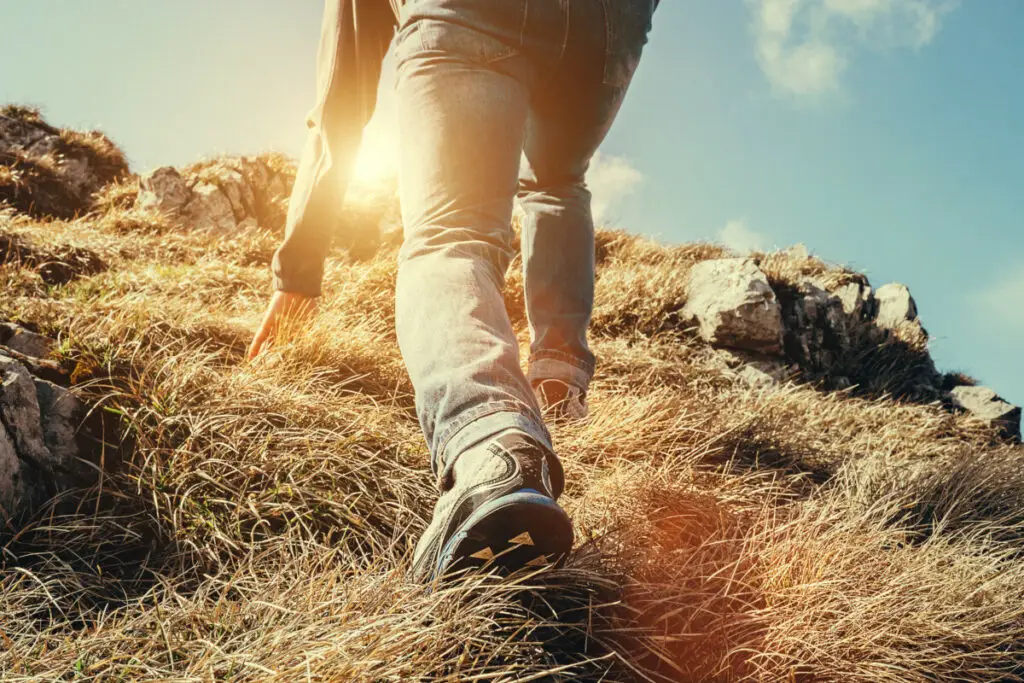
Rock climbing is an activity that many people enjoy doing on a regular basis. However, there are important factors to consider before rock climbing, and you don’t want to go rock climbing during certain weather conditions. So, is it safe to go rock climbing while it is raining?
Rock climbing in the rain isn’t safe because the route is slippery, it is hard to prepare for the adventure, some rock types are dangerous in rainy weather, and safety tips are necessary in order to successfully rock climb when it is raining. Avoid rock climbing when it is raining outside.
Included below are important facts to know about when attempting to rock climb in the rain.
Is It Safe to Rock Climb in the Rain?
Rock climbing isn’t the preferred type of weather to rock climb in. The best type of weather to rock climb in is when the sky is slightly cloudy or sunny, and it hasn’t rained recently. Rain can leave certain types of rock very slippery and difficult to climb.
Put your best foot forward when determining what type of weather will be best. Knowing how often you climb and your skill level can help to know when you should and shouldn’t go rock climbing outside.
How Does Rain Affect Rock Climbing?
What Route was Chosen?
The route chosen can greatly affect the conditions of the course. If the rock-climbing course is at an easy level, it may be harder than that depending on how slippery the route is.
If the level of the route is difficult and it has rained or will rain, it is important to know the risk factors involved before starting the climb right away. Rain can bring on dangers that are different than normal because the weather can drastically change the texture and grip that your feet and hands get on the rocks.
How Prepared are You?
The rock-climbing experiences will give the best outcome to the climber when the best route was chosen, and when all of the necessities were prepared before starting to climb. Climbing can be dangerous if the right equipment isn’t used. Make sure to not go by yourself. When there are other people around, it helps the climber to be comforted knowing that if anything were to go wrong, someone could help out if needed. Having all of the common necessities can save someone from misery if anything were to happen.
Why Does the Route Matter?
The route chosen matters, because when it is safe, it is drier than other sides of the rock formation. Wet areas tend to be more slippery than the areas that look drier. Climbing a route that is soaked in water is not safe or effective. Unexpected falls happen more often than not when the conditions aren’t suitable for the climber. Go rock climbing when it isn’t raining or be prepared for when there is a chance of rain.
Routes
How to know if the route will become affected by the rain.
Route Geometry
This is where the angle of the rock comes into play. Angles that are less than 90 degrees will have more water than if it was vertical. Overhangs, which are the ideal route, are the best routes to climb after it has rained. They tend to stay drier than at other angles when climbing.
Environment
The environment determines whether the route is safe to climb. Rain is most likely going to affect routes that have little to no vegetation. Routes that are located in a forest environment are an ideal choice for the safest route. Weather conditions will not affect the environment as much if the route has a lot of green. Make sure to consider this when choosing your route.
Types of Rock
Granite
Granite rock is the most common type to climb on. The type of weathering on the rock will determine if the rock is slippery. Some granite is rough to the touch and hurts to climb, so keep this in mind to bring the right equipment for your hands.
Sandstone
Sandstone rock is easier to climb on when the weather is dry. Rain will ruin a route of sandstone because water could possibly be soaked underneath the rock, making it dangerous.
Basalt
Basalt is either safe or not safe to climb, depending on the composition or weathering of the rock, it could be a good or bad route. Think wisely when rock climbing on any type of rock, because who knows how slippery it will actually be.
Quartzite
Quartzite provides easy to difficult routes. This type of rock is good for climbers who love adventure because it is often unpredictable.
Limestone
More difficult to climb than other types of rock. The reason for this is the small foot and handholds. This makes it difficult for climbers to have a good grip on the rock. Cold and dry conditions are essential for climbing on this rock.
Tips

Bring a Container of Hot Water
Hot water comes in handy when your hands start to get cold. Believe it or not, cold hands make it nearly impossible to rock climb.
Wear Hats With Brims
Hats with brims will shield you from a rainstorm, as you have to look upwards while climbing. A hat with a brim can also protect against the harmful sun rays when conditions are sunny.
Pick an Easier Route
Certain weather conditions will affect how hard the route will actually be. Routes that are rated easier, will be harder when it is raining than climbing when it is dry.
Bring a Climbing Partner
Climbing in stormy weather conditions is difficult when you don’t have any form of support near you. A rock-climbing partner can keep you out of danger and will most likely see things that a climber wouldn’t notice. It is less scary when you know someone is right there.
Bring a Dry Outfit and Towel
If it is raining, you will most likely be soaked by the end. A towel is a necessity for when you get wet, and it can be a necessity if it gets cold outside.
After everything, the main thing to get out of this is to take safety precautions in order to stay out of trouble when climbing. Climbing conditions greatly affect what is going to come out of the experience.

